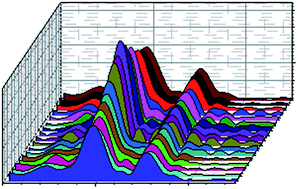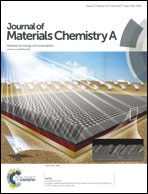In situ Fe K-edge X-ray absorption spectroscopy study during cycling of Li2FeSiO4 and Li2.2Fe0.9SiO4 Li ion battery materials†
Abstract
In situ X-ray Absorption Spectroscopy (XAS) results are presented for Li2FeSiO4 and Li2.2Fe0.9SiO4, promising cathode materials for lithium-ion batteries. The aims are to establish the valence and local structure of Fe during charge and discharge to understand if the Fe3+/Fe4+ redox pair can be reached in the current battery design. It is found that the valence state changes between Fe2+ and Fe3+, with no evidence of Fe4+ before the onset of electrolyte degradation. There is a reversible contraction and extension of the Fe–O bond lengths during cycling while the Fe–Si distance remains constant, which underlines the stability of the Li2FeSiO4 material. The same observations apply to Li2.2Fe0.9SiO4 cathode material indicating that changing the stoichiometry does not provide any additional structural stability.

- This article is part of the themed collections: Celebrating the 2016 RSC Prize and Award Winners and Highlighting materials research in the UK for energy and sustainability

 Please wait while we load your content...
Please wait while we load your content...